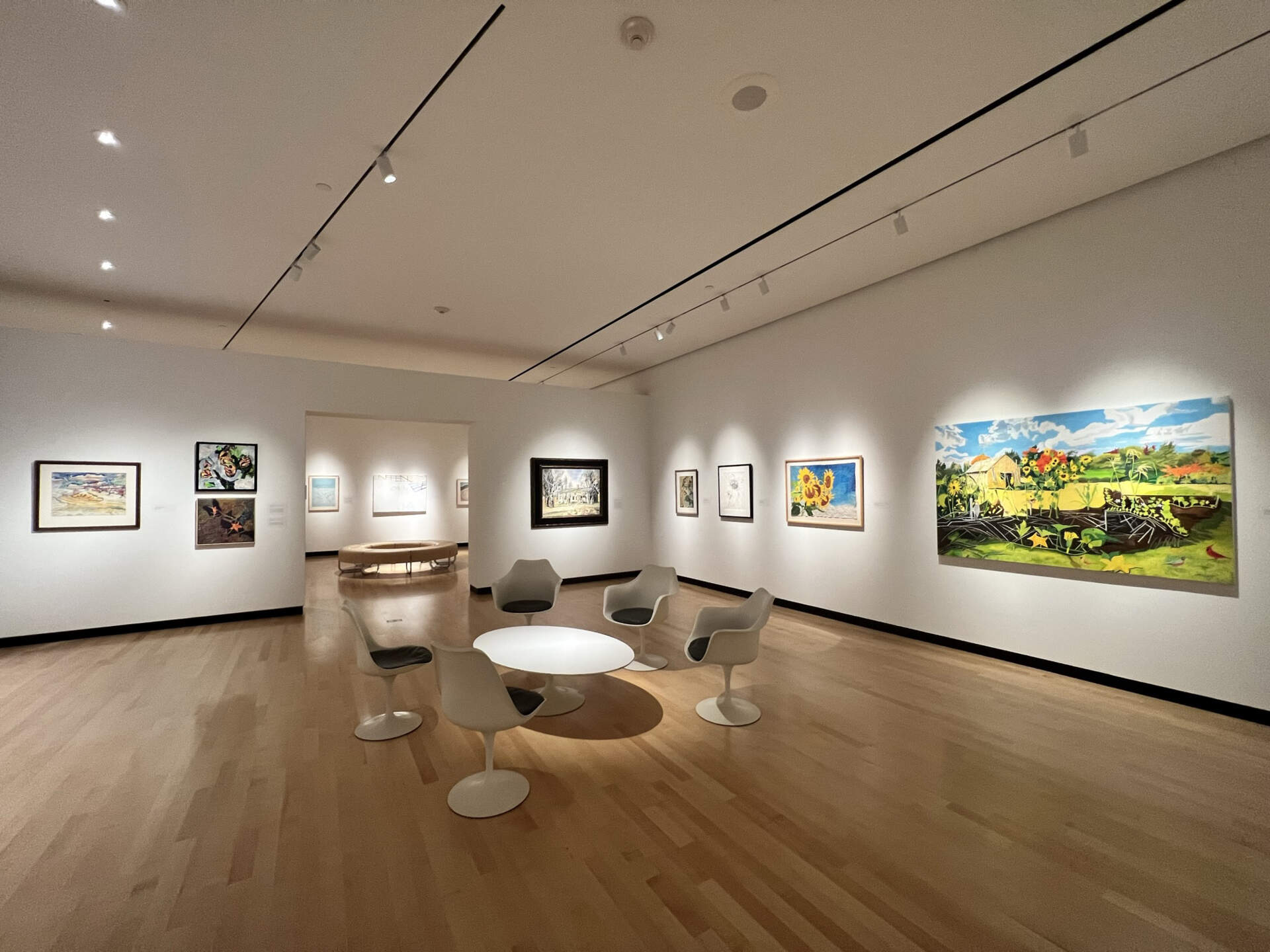
Shared Light: G. Peter Jemison and Charles E. Burchfield
Past
Sep 9, 2022 - Dec 31, 2022
Charles E. Burchfield is known for his profound connection to nature. It had a spiritual quality that he communicated through his art so others might appreciate all its dynamic qualities. Interpreters consider Burchfield one of the last pantheists, individuals who believe nature embodies sacred, transcendent meaning. Not only did Burchfield evolve from a long history of artists intent on depicting the American landscape as a sublimely wild and beautiful frontier, but he also inspired new generations of artists to see the land in their unique ways. One of those artists is G. Peter Jemison of the Heron Clan from the Cattaraugus Territory in the Seneca Nation. Jemison is a multi-media artist and recently retired site manager of Ganondagan, a New York State Historic Park in Victor, New York. Reflecting his heritage, Jemison creates art that embodies orenda, defined as “the traditional Haudenosaunee belief that every living thing and every part of creation contains a spiritual force.” This exhibition will explore their highly individual, yet parallel aesthetic expressions.
In the museum’s Archives, Burchfield Scholar Nancy Weekly found one of Burchfield’s organic doodles with Jemison’s name and telephone number written below it, as well as a small card on which Jemison wrote his name and address. Having known Peter for decades, she wrote to him to ask about their connection. Fortuitously, when Jemison was a student at Buffalo State College, he met Burchfield who came to campus to critique a painting class. After that impressionable encounter, Jemison continued his studies at the University of Siena in Italy and “decided to write a short letter to Charles Burchfield.” In the following excerpt, Jemison shared how they observed the seasonal weather, which was one of Burchfield’s lifelong concerns:
I wrote about the fall weather I experienced that was very like Western New York changing leaves and rain. …To my surprise, he responded to my letter but it didn’t reach me until I was back in Buffalo. …What Burchfield said was because Siena was roughly at the same latitude as Buffalo it made sense that Siena’s Fall was similar. Winter was, in 1964, very rainy in Tuscany “sempre pioggia.” Anyway, that’s my memory of Charles Burchfield, an artist I have great admiration for. He was genius in my estimation.
Shared Light presents paintings, drawings, and prints by both artists, selected collaboratively by G. Peter Jemison and Nancy Weekly. Included are powerful depictions of trees and birds, streams and skies, light and seasons. Both artists demonstrate a deep concern for the viability of the land by showing examples of how it has been desecrated as well as how it has retained its original energy. Works from the Burchfield Penney Art Center are featured with works from private and public collections. Shared Light: G. Peter Jemison and Charles E. Burchfield is presented through the generosity of the Charles E. Burchfield Foundation. For their additional support, we gratefully acknowledge K Art, Odie and Rob Porter, and an anonymous patron.
About G. Peter Jemison
G. Peter Jemison’s artwork has been shown internationally and his writings have been widely published. He is very active politically as an advocate for Native American rights. He was chairman of the Haudenosaunee standing committee on burial rules and regulations, fighting for the return of human remains and sacred objects to native peoples mandated by the federal Native American Graves Protection and Repatriation Act. He has been a spokesperson on related topics, and has participated in numerous symposia, including an early panel discussion held at the Center in the 1980s. Jemison was one of the founders of the Museum of the American Indian in New York City. His book, The Treaty of Canandaigua 1794 has been favorably received as an important contribution to history. In 2001, he was guest curator and wrote a catalog essay for The Pan-American Exposition Centennial: Images of the American Indian held at the Burchfield Penney Art Center. The exhibition featured contemporary artists whose work explored identity, as opposed to how Indigenous people were misrepresented 100 years earlier. In 2021, K Art in Buffalo presented a survey of his work in the solo exhibition, Orenda: Works by G. Peter Jemison with an accompanying illustrated catalogue.
About Charles E. Burchfield
Watercolorist Charles Ephraim Burchfield (1893-1967) is one of America's most original artists. Best known for his romantic, often fantastic depictions of nature, Burchfield developed a unique style of watercolor painting that reflected distinctly American subjects and his profound respect for nature. At the age of fifty, he returned to ideas begun in early youthful fantasy scenes that he often expanded into transcendental landscapes. Burchfield, always probing the mysteries of nature to reveal his inner emotions, once stated, "An artist must paint not what he sees in nature, but what is there. To do so he must invent symbols, which, if properly used, make his work seem even more real than what is in front of him." He followed this artistic vision until the end of his life, creating some of his most mystical works.
Burchfield gained acclaim through inclusion in prestigious national exhibitions, and he received numerous awards. His artistic achievement was further honored with the creation of the Charles Burchfield Center at Buffalo State College on December 9, 1966.